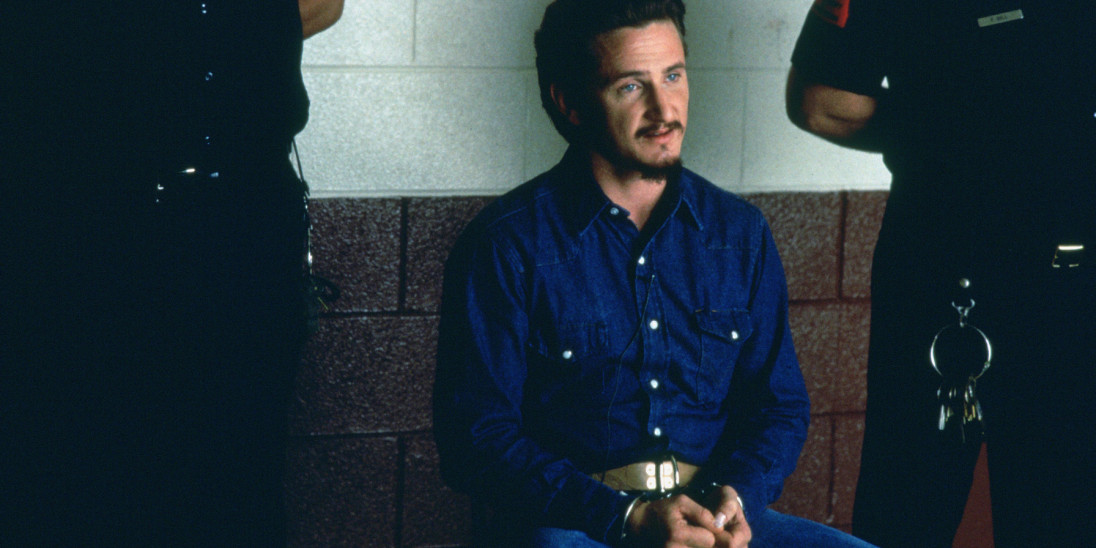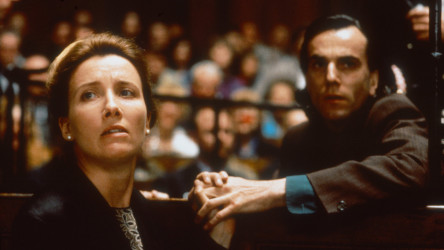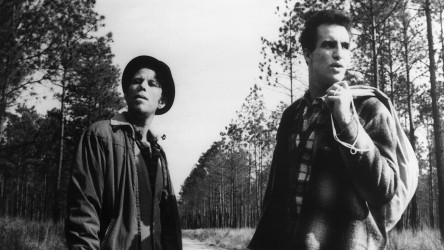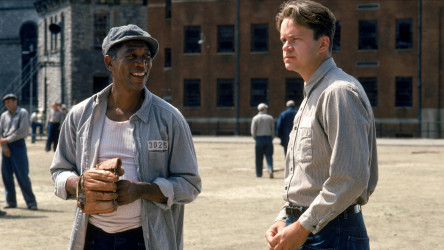Dead Man Walking(1995)
Profound drama about the death penalty, examined through the conversations between a nun and a man awaiting his execution for a brutal murder.
Certificate
Age group15+ years
Duration117 mins


The film Dead Man Walking is a film that strikes at the hearts of the audience and also touches on issues that are controversially discussed. The message of the movie is focussed on the Death Penalty, Tim Robbins’ (the director) aim for this film was “so basically what we’re doing is, is in an honest way presenting both sides of the issue and looking inside the door of the death chamber, and we’re, you know, trying to reflect reality in there” (Robbins, Frontline interview, Rose, 1996).
Dead Man Walking is about Sister Helen Prejean (Susan Sarandon) who out of impulse answers a letter from a prisoner at the Louisiana State Penitentiary at Angola called Matthew Poncelet (Sean Penn). The first question that is asked of Sister Helen Prejean is “Do You know, what you’re getting into?” We can see that this is also directed at the audience, due to the camera solely focusing on the prison’s Priest with a medium shot in the Chaplin’s office. The reason this is such a big question to ask and can have a major effect on the audience is because, the main focus is the Death Penalty, with many side messages along the way like racism, family issues and religion.
Tim Robbins has made us go along this emotional journey following the protagonist, Sister Helen Prejean, helping Matthew Poncelet by saving his soul and getting him to confess the sins he has committed and ultimately reaches salvation. The film is based on a true story about two brothers who committed a similar crime to that which is shown within the movie. The crime is shown only in flashbacks and in black and white, going back and forth from the past to the present to reiterate the crime committed and why Poncelet is now on death row fighting for his life.
In this experience for the audience we see Sister Helen Prejean not only empathise with Matthew who had been charged with death row, we also see her go to the other side and visits the families of Hope and Walter. When we see this, we assume that she has gone to the other side of this argument, but we later find out that she hasn’t which then leads to her being ejected from the house of Hope’s parents. This rejection hits Sister Helen Prejean very hard and ultimately makes her question her faith, the audience’s faith and causes us to revaluate our opinion on the death penalty.
We have to give credit to Susan Sarandon and Sean Penn as they have played a pivotal role in making this film have such an impact on the population. The acting is strong, to try and get their message across about capital punishment, they succeed in this and we ended up siding with Matthew, feeling sorry for him as we see him only show emotion towards the end of the movie. The acting was not only phenomenal but Susan Sarandon was awarded an Oscar for her portrayal and Sean Penn was nominated as best actor.
When the Sister goes to the prison for the first time she is appalled to hear about the crime that Matthew has committed. Despite mounting opposition, she continues to visit and support Matthew through his time in need. She is trying to be his guardian angel, fighting by his side against the death penalty.
The strength of the movie is the portrayal of the families involved and the effect of the crime on members of the families. As each family tells their story, this for sure will make the audience tear up like Sister Helen, we realise they can never be healed. In Walters’s family the mother isn’t shown once throughout the whole movie and the family ends up getting divorced, Hope’s family stay strong together but shun Sarandon’s attempt to reconcile Matthews’s mistakes. Finally, with Matthews’s family it really shows the family message, in the scene near the end, the family go and visit Matthew and what we see as an audience is a strong family that is still proud and loving of one another. This is the moment that really tugs on the heart strings for the audience as this is the first time we see Matthew shed any tears.
Finally, the movie was filmed over Easter, Matthew likens himself to Jesus when he is sitting behind bars talking to Sister Helen and like Jesus he is finally absolved of his sins by Sister Helen.
Print this review
Powerful drama based on the true story of Gerry Conlan, an Irish man who spent 14 years in prison for a deadly terrorist pub bombing he didn't commit.
Certificate

Laid-back black and white comedy about a New Orleans jail break.
Certificate

A thoughtful, measured prison film about a wrongly convicted man and the survival of hope in hopeless situations.
Certificate